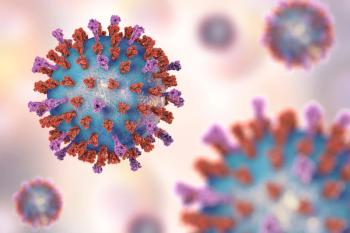
Chemotherapy Resistance: Genes That Disrupt Breast Cancer Treatment Response Identified
Higher levels of transport genes are an indicator of patients likely to be resistant to therapy with tamoxifen.
Patients with estrogen receptor-positive breast cancer who have higher levels of nuclear transport genes, especially XPO1, are more likely to be resistant to the chemotherapy drug tamoxifen.
Tamoxifen resistance results in the development of incurable metastatic cancer. In a new study published in Molecular Endocrinology, researchers found that tamoxifen, which blocks the activity of XPO1, combined with the drug selinexor, enhanced sensitivity to prevent the recurrence of cancerous tumors.
Although tamoxifen has been widely used since the 1970s, up to one-third of patients with hormone-responsive breast cancer do not efficiently respond, or eventually stop responding to tamoxifen (endocrine resistance).
Compared with other endocrine-targeting agents, tamoxifen is still very effective, but determining which patients will respond to the drug effectively has left physicians and researchers scratching their heads.
In the study, however, researchers were able to identify a signature of 13 nuclear transport genes, including XPO1, which provides clinicians with a biomarker to predict which patients are likely to be
For the study, investigators built upon prior research that identified the hormone ERa as an agent that activates and regulates the kinase ERK5, triggering increased cell proliferation or metastasis. ERK5 is a protein that relays signals from outside cells to their nuclei.
Based on those previous findings, researchers hypothesized that nuclear transport genes might be involved in exporting ERK5 from the cell’s nuclei, especially XPO1, which promotes these aggressive tumors. The researchers were able to identify the 13 genes that were overexpressed in the most aggressive types of breast tumors by analyzing data on genes that were differentially expressed in ERa-positive and ERa-negative tumors.
“When we looked into the gene signature further, we found that if a patient had a higher expression of XPO1, their survival time was less, they had metastases earlier on, and endocrine-resistant tumor cells proliferated more rapidly when treated with tamoxifen,” said lead researcher Zeynep Madak-Erdogan.
To mimic this endocrine resistance in the lab, researchers grew tamoxifen-responsive breast cancer cells from 33 patients in a tamoxifen solution for 100 weeks. When the activity of ERK5 was examined at 3 intervals, researchers found that the transportation of ERK5 to cell nuclei increasingly diminished as endocrine resistance progressed.
After hypothesizing that a combination treatment may help restore endocrine sensitivity, researchers treated tamoxifen-resistant breast cancer cells in mice with increasing doses of both tamoxifen and selinexor, which was found to completely block tumor progression.
“If we use this combination — targeting the estrogen receptors with tamoxifen, and XPO1 with the inhibitor selinexor – we can delay the development of endocrine resistance, effectively killing the tumor cells and at the same time reducing the dose of tamoxifen that’s needed,” Madak-Erdogan said.
Newsletter
Stay informed on drug updates, treatment guidelines, and pharmacy practice trends—subscribe to Pharmacy Times for weekly clinical insights.




